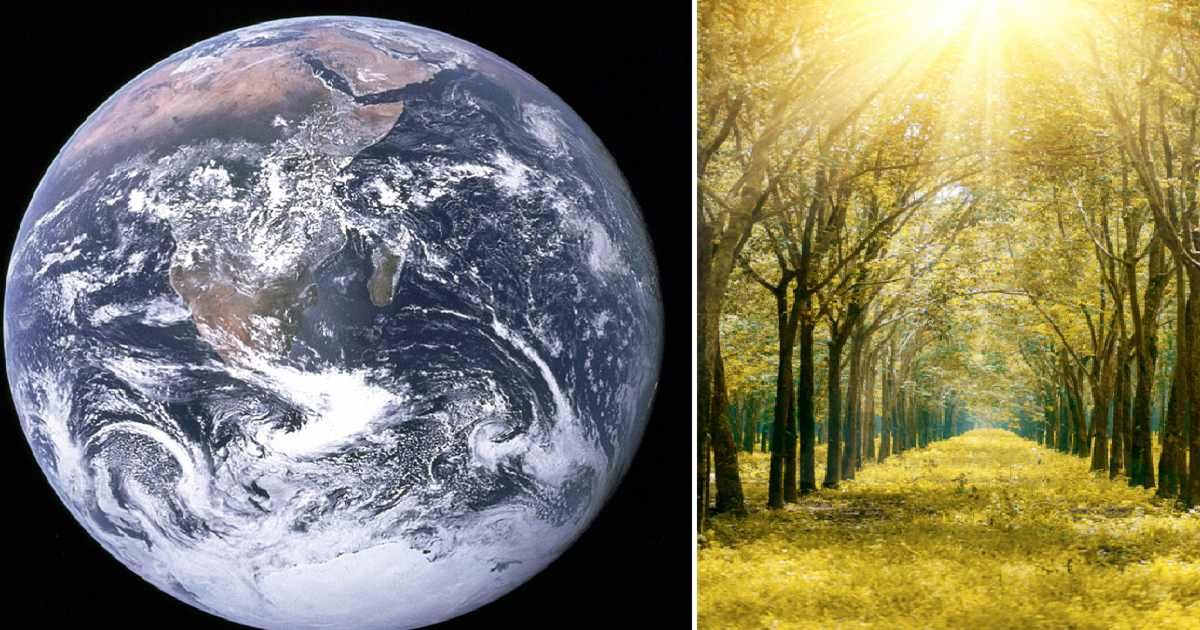Researchers Claim Earth’s Slowed-Down Rotation Has Lengthened Days, Which Could Increase Oxygen

The Earth is always in motion. It spins and it orbits nonstop. While this may feel static, our planet has been subtly changing tempo over billions of years. What was once a fast-spinning world with six-hour days is now a more chilled-out globe, rotating once every 24 hours. But this event may actually hold the key to one of the most profound mysteries in Earth’s history—how exactly our atmosphere got its oxygen. A groundbreaking 2021 study suggests a stunning possibility that the gradual slowing of Earth’s spin contributed directly to the oxygenation of the atmosphere, creating the way for complex life, according to Nature.

As microbiologist Gregory Dick of the University of Michigan explained, "Our research suggests that the rate at which Earth is spinning – in other words, its day length – may have had an important effect on the pattern and timing of Earth's oxygenation," stated Science Alert. To understand this link, we need to travel back 2.4 billion years to the Great Oxidation Event, when photosynthesizing cyanobacteria began releasing major amounts of oxygen. However, until this discovery, scientists could not explain why this spike happened then and not earlier. The study provides a potential answer; the planet’s longer days may have given microbes more time in sunlight, allowing more oxygen to escape into the atmosphere.
Researchers investigated this connection by deeply studying modern mats in Lake Huron’s Middle Island Sinkhole, an oxygen-poor, sulfur-rich environment thought to mimic ancient Earth. Intriguingly, two types of microbes compete for space there—sulfur-eating white bacteria and purple cyanobacteria that photosynthesize to produce oxygen. Now, during the daylight, the white microbes retreat, letting cyanobacteria bask in the sun and release oxygen. But, it is crucial to note that this particular process is slow, as these bacteria need time to speed up photosynthesis. Geomicrobiologist Judith Klatt shared, "The cyanobacteria are rather late risers than morning persons, it seems…It's possible that a similar type of competition between microbes contributed to the delay in oxygen production on the early Earth," stated Science Alert.
Did you know that Earth's rotation is slowing down, making our days longer? This is because the moon 'pulls' at our oceans, shifting the mass of our planet. pic.twitter.com/iFnbWdBoGM
— World and Science (@WorldAndScience) May 15, 2025
This lag means shorter days result in less oxygen escaping the mats. However, that is not the case with longer days, the result of Earth’s rotational slowdown due to tidal friction with the moon, the cyanobacteria had more time to produce and release oxygen. Indeed, the fossil record shows that a day was just 18 hours long 1.4 billion years ago. We are still gaining about 1.8 milliseconds every century. Detailed experiments and models confirmed that even when the rate of photosynthesis was constant, longer days led to higher net oxygen release. Marine scientist Arjun Chennu emphasized, "This subtle uncoupling of oxygen release from sunlight is at the heart of the mechanism…We tie together laws of physics operating at vastly different scales, from molecular diffusion to planetary mechanics. We show that there is a fundamental link between day length and how much oxygen can be released by ground-dwelling microbes," stated Live Science.
Intriguingly, not only could this explain the Great Oxidation Event, but also the Neoproterozoic Oxygenation Event 550–800 million years ago. All in all, Earth’s own mechanics may have been the real reason behind this revolution.